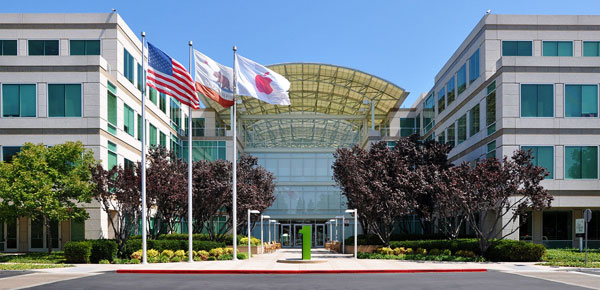Apple on Monday announced a plan to build two new data centers in Europe — one in County Galway in Ireland and the other in central Jutland in Denmark. Apple plans to spend US$1.9 billion (1.7 billion euros) on the project — its largest European investment to date. The new facilities will power its online services including the iTunes Store, App Store, iMessage, Maps and Siri.
“We are grateful for Apple’s continued success in Europe and proud that our investment supports communities across the continent,” said Tim Cook, Apple’s CEO, noting that the project would create hundreds of new jobs.
Apple has added more than 2,000 jobs in Europe in the past year. It currently employs some 18,300 Europeans across 19 countries. The company’s sales growth in Europe has outpaced the U.S.; sales in Europe rose 66 percent last quarter from the preceding period while growth in the U.S. rose by 55 percent.
Going Green in Europe
The new data centers may address calls by European regulators that data be stored closer to local users and authorities. Google and Facebook have opened data centers in Finland and Sweden respectively.
Apple’s two facilities, which at 166,000 square meters will be among the largest data centers in the world, are scheduled to begin operations in 2017. They will run entirely on clean, renewable energy sources, creating the lowest environmental impact yet for an Apple data center.
The Ireland-based data center will be built on land previously used for growing and harvesting of non-native trees. It will provide outdoor education space for local schools and a walking trail that can be used by the community. The Danish center, which will be near one of the nation’s largest electrical substations, is designed to capture excess heat from the equipment inside the facility and conduct it into the district system for use in the neighboring community.
“Apple’s data center plans for Ireland and Denmark make a lot of sense technologically and economically,” said Charles King, principal analyst at Pund-IT.
“For some time now, IT vendors and cloud service providers have been pressured by the EC and other governing bodies to store data closer to owners and users,” he told the E-Commerce Times.
“Building facilities in Ireland and Denmark should allow Apple to cover its bases in much of Europe,” King continued. “The locations are also attractive from the standpoint of ecological sustainability, since both countries are actively developing renewable energy sources, particularly wind power.”
Jobs and Goodwill
The facilities’ low environmental impact is just one side of the coin. They also offer significant economic benefits.
“Apple didn’t do this just for goodwill,” said Frederick Lane, an expert on the impact of emerging technologies on society.
“They’re looking at the tax implications as well,” he told the E-Commerce Times.
Ireland appears to be a logical choice for the data center. After its tech boom in the 1990s was crushed by the dot-com bust in the 2000s, the country has been working hard to attract business to become part of the next tech wave.
“Ireland is trying to crawl its way to economic viability, and Apple probably got a good tax deal, as the data center is providing a lot of jobs,” added Lane. “For Ireland, they get the employment, and this project doesn’t have a big environmental impact.”
Nothing’s Rotten in Denmark
Denmark also makes sense environmentally and economically.
Apple gets “the warm and fuzzy goodwill for their environmental viability, and at the same time it takes some heat off their operations in China,” Lane noted. “This project helps burnish Apple’s environmental credibility.”
The climate offers another advantage. The cooler air of Northern Europe could be ideal to help keep server farms at an optimal working temperature.
Other tech giants have chosen locations in Scandinavia for their respective data centers.
“Denmark isn’t a high-tech power, so they want a piece of that pie as well,” said Lane. Economic incentives likely helped seal the deal.
Timing is also on Apple’s side.
“From a broad economic perspective, there hasn’t been a better opportunity for U.S. companies to invest in Europe in some time,” said Pund-IT’s King. “The dollar is trading at its highest rate in nearly two years — roughly 20 percent higher.
“Put another way, Apple is saving roughly half a billion dollars due to currency value by pursuing the projects today than it would have in 2013,” he said. “That may seem like chickenfeed to a company with $150 billion-plus in the bank, but it all adds up.”






















































Social Media
See all Social Media